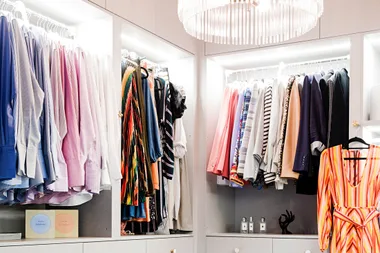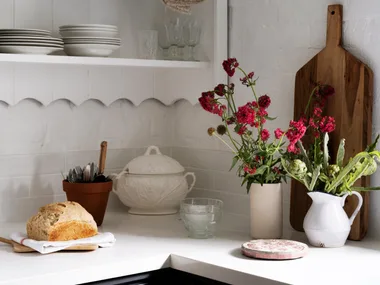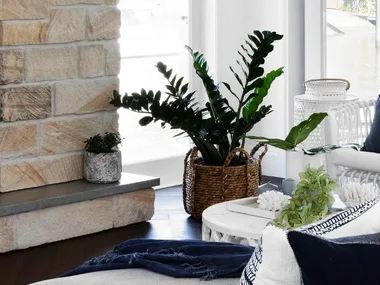Zen den, calm corner, man cave or she shed… whatever you call them, wellness zones are suddenly all the rage. While it might not seem like a necessity for your home, prioritising your health and wellbeing is important. And when these rooms can be so easy to create, why not try it? You can dedicate an entire room to the pursuit of wellness, or simply a little nook in an unused corner. You can even customise the types of wellness you want to focus on. As Mariah Burton, Folk Studio co-founder and interior designer reflects, “Our clients are increasingly interested in dedicated areas for wellness activities such as saunas, ice baths and gym workouts.”
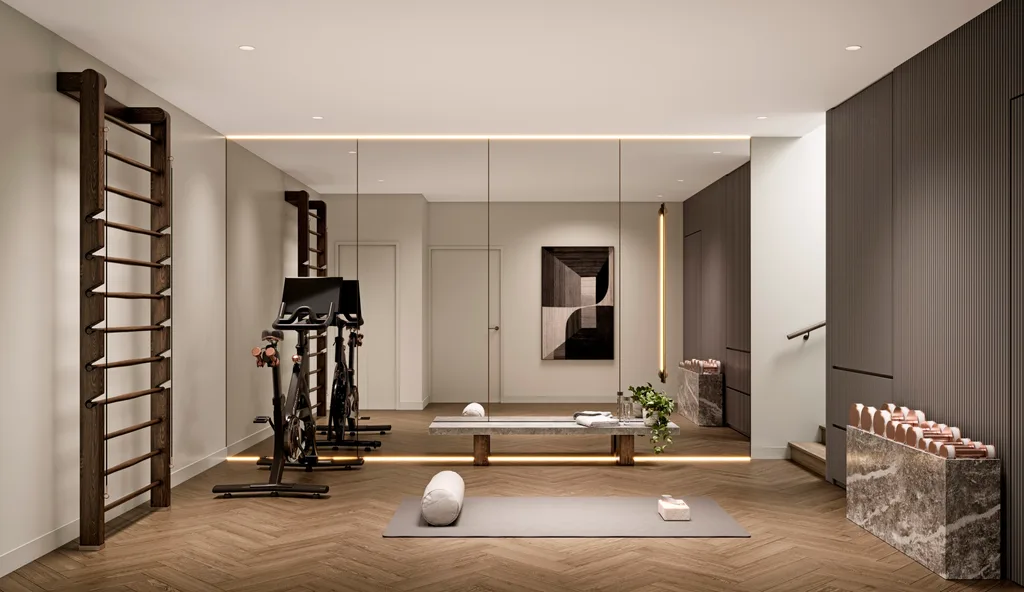
If you want to create a wellness room, the first step is to establish what you’ll be doing in it. Is it for yoga or meditation? Reading? Cold plunge? Or work outs, like the home gym interior architect and designer Lorena Gaxiola created? From there, figure out how much space you’ll need. If you’re renovating or planning a home from scratch, the world is your oyster. But even working with your existing space is simple. After all, your own private health hub needn’t be elaborate, says Mariah. “You just need a calm space that you love spending time in.”
1. Home gym
Whether comprised of a few dumbbells, a treadmill, weights machines or all of the above, home gyms are a game-changer. Sam Wood, founder of fitness and nutrition program, 28 By Sam Wood, is a fan of cable machines, which use a space-saving system of weights and pulleys to strengthen your whole body. “They’re versatile, so you get bang for your buck,” says Sam. Technogym’s compact, stylish ‘Kinesis Personal’ cable machine is a good option, as is Nohrd’s SlimBeam.
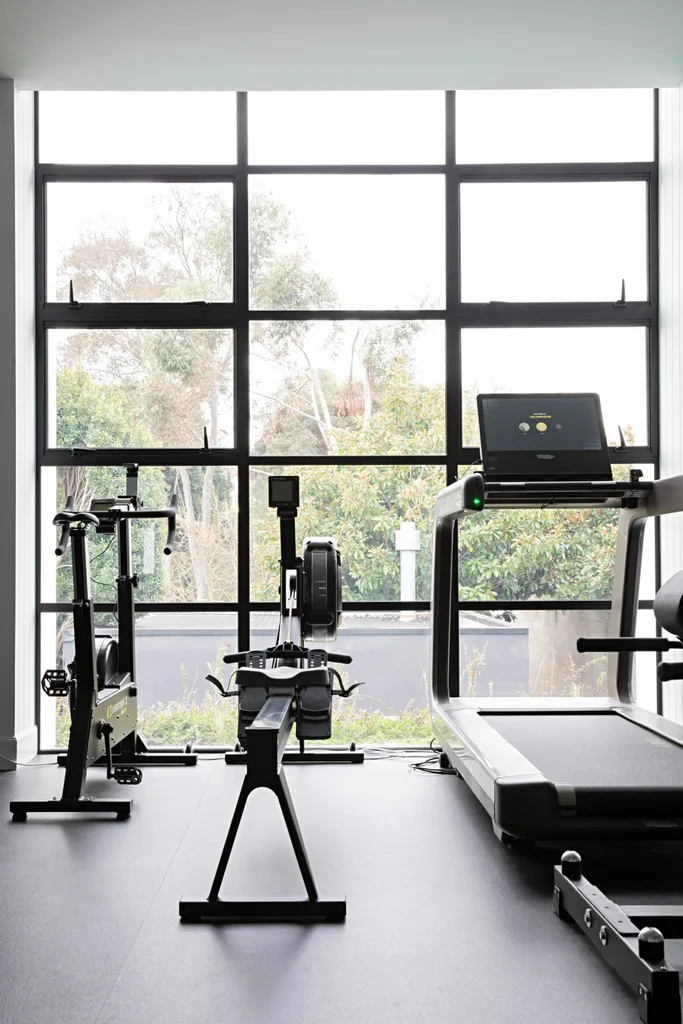
2. Sturdy flooring for your wellness room
When it comes to your fitness space, flooring that’s both comfortable and hardy is crucial, especially if you’re (gently) dropping free weights on the floor. “For a room that’s more wellness-centred, timber floorboards or Bolon are fantastic,” advises Amanda Boyle, spokesperson for Technogym, which offers an interior design service. “For performance-oriented spaces we recommend virgin rubber to absorb sound.” Sustainably sourced cork is another option, suggests architect Melanie Beynon.

3. Ice baths
Not just a TikTok trend, ice baths have purportedly been around since Ancient Greece and may improve post-exercise recovery, reduce inflammation and pain, and bolster mental fitness. They can be an investment but they don’t have to be. From DIY cold plunges in the bathtub to economic inflatable ice baths to permanent cedar-and-stainless-steel jobs, there’s an ice bath option for every budget.
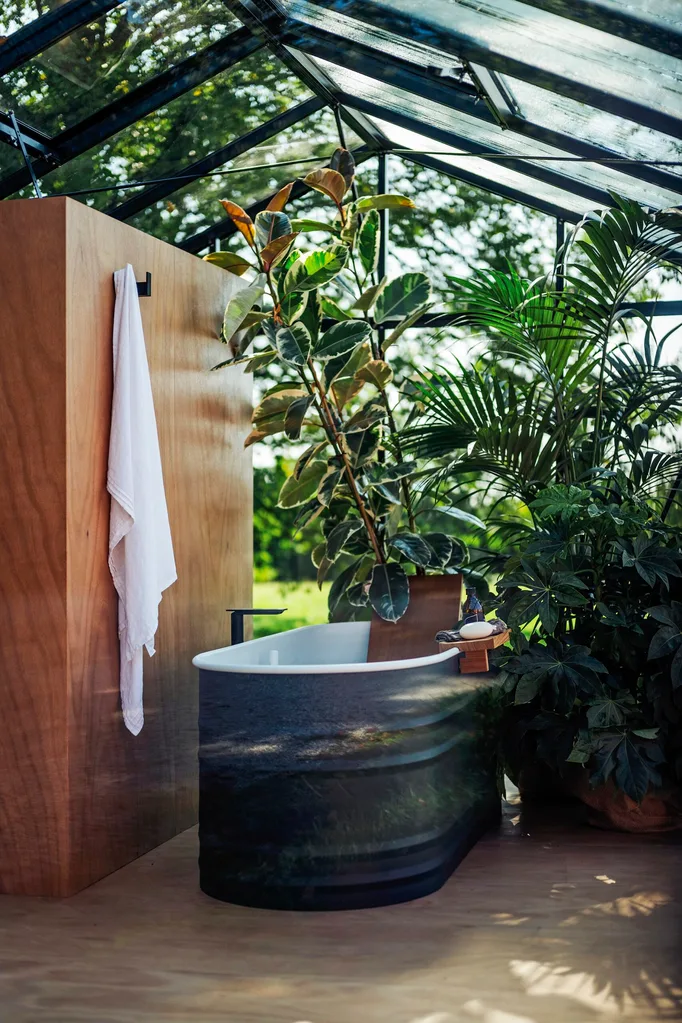
4. At home sauna
More of a heat-seeking wellness warrior? Consider adding a sauna to your zen den. “For health-conscious people who don’t want to pay exorbitant spa fees, having a home sauna ends up being more cost-effective in the long run,” explains Winston Tu, Luxo Living founder. Infrared saunas are a popular alternative to traditional steamy saunas, which use infrared light to comfortably heat the body and operate at lower temperatures. “Infrared saunas consume less energy,” says Winston. “They’re also easier to install because they only require a standard outlet.” Traditional saunas, he adds, are still great if you have the space, and budget for professional wiring.
Sam Wood firmly believes that infrared saunas are worth the investment in your wellness room. “Between [my wife] Snezana and I, we use an infrared sauna at home at least 10 times a week,” shares Sam. “It is an investment… but you can hop straight from the sauna to the shower to work.” Can’t swing a sauna? Browse Amazon for affordable infrared sauna blankets.

5. Indulge the senses
Regardless of its size, Mariah says the design secrets to a tranquil wellness space include: a neutral base colour; harmonious accent colours; a statement feature; mixed textures; and a signature scent (you could even pick one of Home Beautiful’s 10 favourite candles). “I like to incorporate a diffuser, room spray and candle that all have the same fragrance,” she says. Personal touches, such as woven baskets, robes, patterned towels and water carafes add texture, she adds, and opting for plants instead of busy artwork helps foster a connection to nature.
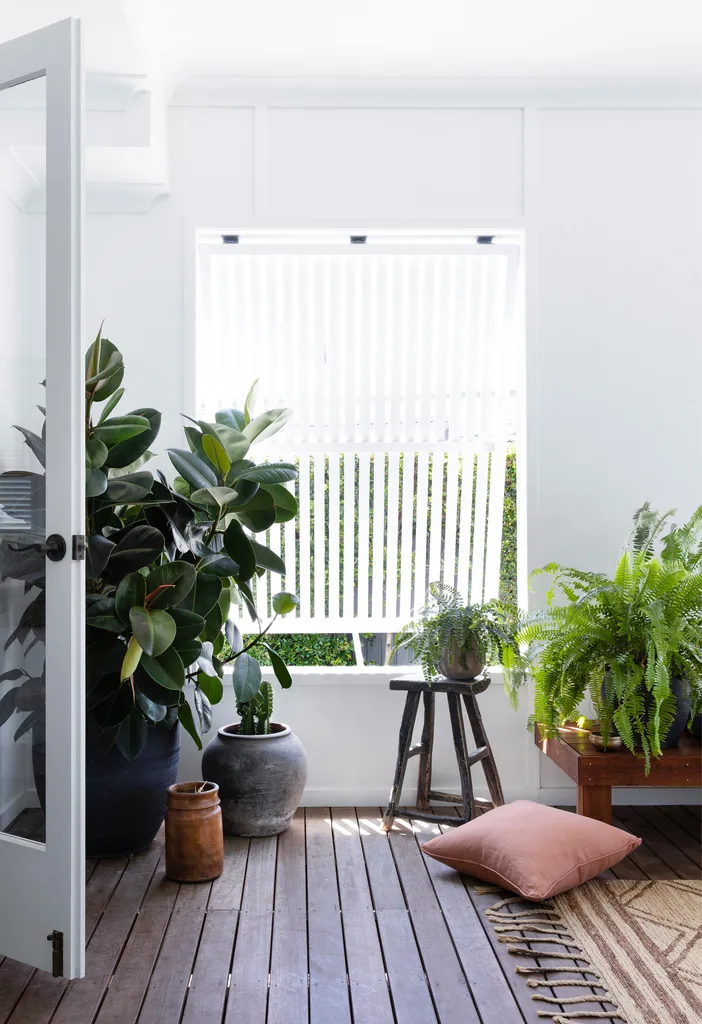
6. Lighting essentials for your wellness room
Natural light is key, asserts Melanie, while layers of artificial light can evoke the right mood in darker spaces. Use LED strips in coves, behind mirrors or to highlight rendered walls or textural features. “In my home, for example, I created a space with LED lighting recessed into the floor, which ‘washes’ up a timber-lined wall. When the lights are dialled right down, it provides a nice, honey-toned glow,” Melanie says. Additional lamps, wall lights or pendants offer task lighting and boost the ambience, she adds.
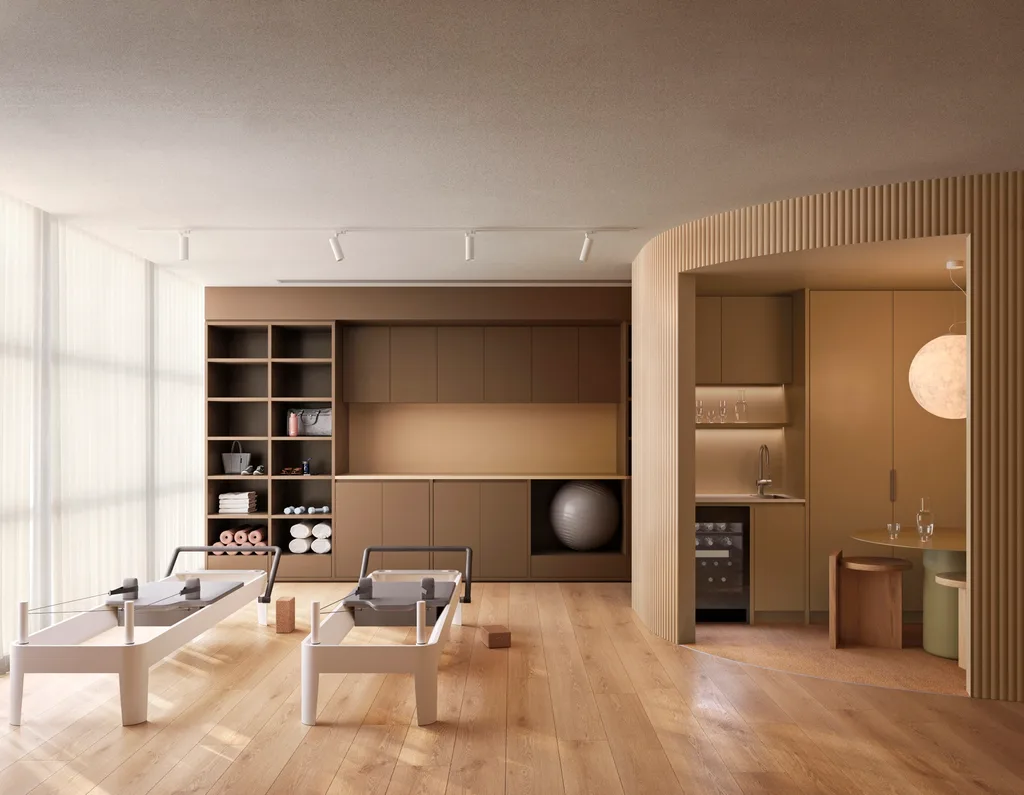
7. Read books about wellness
Wellness spaces aren’t just for sweat sessions. Personal library curator Lucy Pearson suggests creating a reading nook or mini ‘wellness library’. You’ll need a comfortable reading chair or cushioned seating — check out Business & Pleasure’s modular pillow stack — blankets, a side table, ideally an adjustable reading lamp and, naturally, books. They should look good, too. “Colour-coding books gets a bad rap, but for a tranquil reading space, muted tones are essential,” explains Lucy. “I favour book covers in off-whites, sage greens, pale blues and dusty pinks.” Aim to make your wellness nook a tech-free zone, keeping phones and screens out of sight and mind.

‘In the Garden’: Essays on Nature and Growing by Various, Daunt Books.
‘Enchantment’ by Katherine May, Allen & Unwin.
‘The Keys to Kindness’ by Claudia Hammond, Allen & Unwin.
‘Walk with Your Wolf’ by Jonathan Hoban, Hachette.
‘Breath: The New Science of a Lost Art’ by James Nestor, Penguin Books.
Unwind in your wellness space with these books
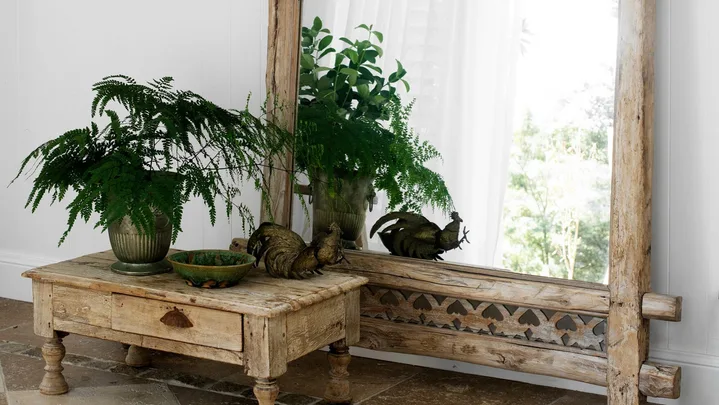 Photographer: Brigid Arnott / Stylist: Jessica Belle
Photographer: Brigid Arnott / Stylist: Jessica Belle
